
Seis Akustik has been providing all-round service since 1980, and since then we have successfully completed over 10,000 projects.
Benefit from our extensive experience!
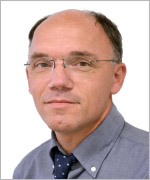
Distribution area center

Distribution area center/north
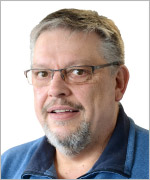
Distribution area center/north
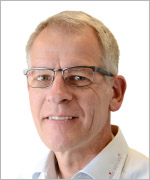
Distribution area center/west
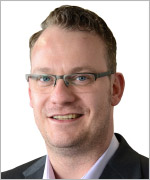
Distribution area east
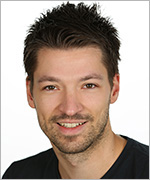
Distribution area southwest
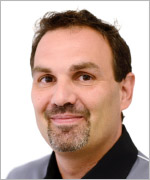
Distribution area southeast
The laying of the foundation stone of the Holy Cross Church by Bishop Hermann Dingelstad dates back to 1899, and as a result of the war-related destruction of the Cathedral of Münster, the Church of the Cross was elevated to the status of a procathedral in 1945. In 1946 Cardinal Clemens August Graf von Galen celebrated his first pontifical office. Only 5 days later the pontifical requiem for the suddenly deceased cardinal takes place in Heilig Kreuz. Today the Heilig Kreuz Gemeinde is a fusion of three parishes and more than 9000 Catholics. The Church of the Holy Cross now shines again in its old splendour after a comprehensive interior renovation. Uwe Sonntag, GF Seis Akustik, provided the concept for the renewal of the transmission technology and the song display system after a previous, intensive comparison. After in-depth testing of various systems, only the newly developed SDM10 audio-digital system from Seis Akustik was convincing. Furthermore, under the very difficult acoustic conditions that have arisen since the renovation, the superiority of the new XL sound shaper loudspeakers became more than clear. The special loudspeakers developed for use in acoustically challenging rooms always convinced with excellent word comprehension, even under the most diverse conditions. When selecting the new song indicator, the community clearly decided in favour of the ultra-flat, radio-controlled VISIO display system from Seis Akustik.
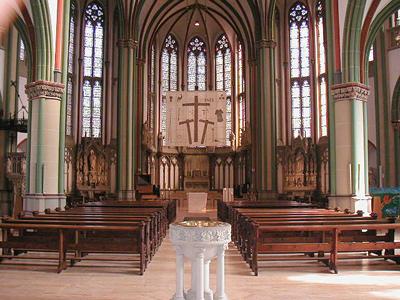
The gothic-style of Marien church in Gelnhausen, Hesse, first mentioned in a document in 1223, has undergone a series of conversions and reconstructions over the centuries. Only recently, a new sound system was installed by seis-akustik. Decisive for this decision was the outstanding sound quality and excellent speech intelligibility of our system, even under difficult acoustic conditions.
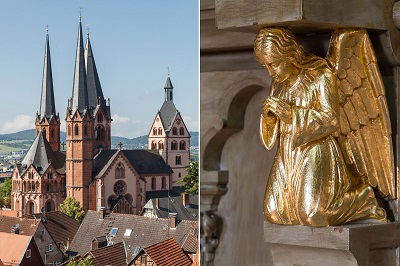
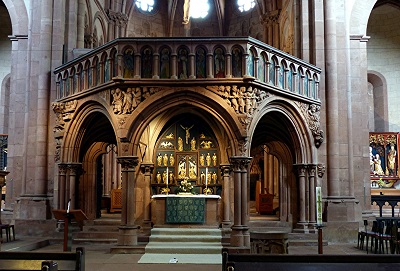
The pilgrimage cathedral was designed at the end of the 1960s by Gottfired Böhm, the only German winner of the Pritzker Prize. With over 6000 seats, the pilgrimage church is the second largest in North Rhine-Westphalia after the Cologne Cathedral. Franciscan monks of the affiliated monastery look after pilgrims from all over the world with church services and various offers for pilgrims. New microphone technology and a DSP control system complement the acoustic system. Very large response ranges and better transmission characteristics, digitally controlled and processed by a matrix mixer, guarantee advantages in speech intelligibility. The radio microphones used, in the new frequency range, already comply with the latest radio regulations and can be operated free of charge and without worries over the year 2015.
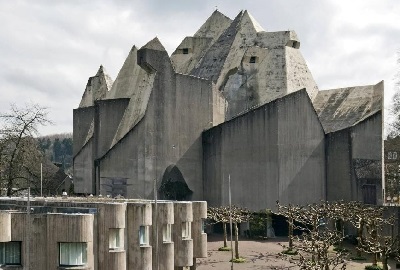
In the middle of the old town lies the cathedral of St. Bartholomew. The building history of the church began already in the 7th century. From 1356 on, as determined by the Golden Bull of Charles IV, the Roman kings were elected in the cathedral. Between 1562 and 1792, ten imperial coronations took place in the cathedral, but this tradition ended with the dissolution of the Holy Roman Empire of the German Nation. A fundamental reconstruction during the Romanesque period and brisk building activity during all periods of the Gothic changed the cathedral significantly until the big fire in 1867. With the repair of the war damages from 1948 onwards the cathedral got its present appearance. In its history, the sacred building has never been the cathedral church of a bishop but is under the care of the diocese of Limburg. The secular lord of the house is the city of Frankfurt. Every day guests from all over the world visit the church. Persistent complaints of the church visitors about the bad word comprehensibility in the service gave now the cause for the responsible persons to achieve an improvement of the speech intelligibility in the imperial cathedral as soon as possible. The Seis Akustik Team was commissioned to develop a new audio concept for the cathedral. On the one hand, the new audio system should ensure good speech intelligibility under the difficult acoustic conditions, but on the other hand, it should also meet the high demands of modern church use. Another important concern of the client was to achieve a simple "one-button operation" of the future transmission system. On behalf of the customer, a Seis Acoustics team, led by Ing. Jan Bril, first carried out an acoustic room analysis in the cathedral. Based on the results of the acoustic measurement, simulations were then carried out with "EASE" and subsequently the requirement profile for the technical implementation was created. This then served as a guideline for the selection of suitable loudspeaker arrays and their placement at the determined positions in the room. The subsequent test run of the new transmission technology in the cathedral quickly demonstrated the superiority of the new digital technology and convinced all those involved. The new system was completed in time for the Christmas service and passed the first test.
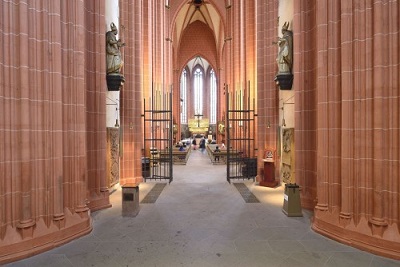
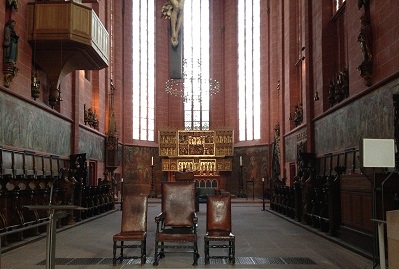
Embedded in the mountainous landscape of the Kellerwald, the former Cistercian abbey of Haina is located about 35 km north of the university town of Marburg. When the construction of the almost completely preserved monastery complex was begun around 1215, the monastery already had almost seventy years of history behind it. Construction of the monastery church began around 1216. Initially planned as a basilica in Romanesque style, the first eastern bay of the nave saw a change to the hall form. A first consecration of the church by Archbishop Siegfried of Mainz is attested for April 1, 1224. The uniformity and harmony of the room is impressive. The church was built at the crossroads of Romanticism and Gothic.
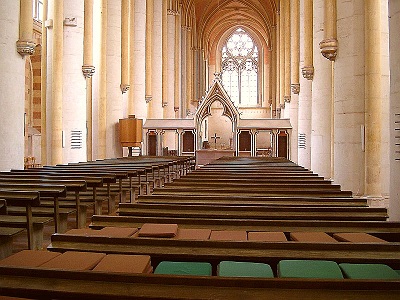
The Benedictine abbey is picturesquely situated at 125m above the Honigbach valley. Now, in the course of extensive renovation and modernisation measures, the transmission system has also been brought up to the latest state of the art. For the renewal of the microphone technology, it was important to those responsible to engage a company that could not only provide a technically future-proof solution but also an optically appealing integration. After a thorough trial run, the decision was made in favour of the most modern audio-digital technology from Seis Akustik. In addition to 24 newly developed special loudspeakers, high-quality designer condenser microphones from the MK5 series were used. Father Sebastian was also highly satisfied with the new technology in the abbey church: "At last we have a microphone system that masters our difficult acoustic conditions and fully meets our requirements!
In 2013, the old Willehadi Church burned down completely except for two pieces of the outer wall. Already in 2017 the first service was celebrated in the rebuilt church with technology from Seis Akustik. The new construction of the church gave the unique opportunity to upgrade the acoustic system and the media technology equipment to a modern, contemporary standard. Based on our concept for a demand-oriented audio and media technology with high ease of use, a media control system specially programmed by Seis Akustik was installed. All settings can easily be made on a touch display, e.g. wirelessly via WLAN. No matter whether you want to transmit speech, play music or project entire pictures or films, every medium will be part of everyday church life in the future. The entire signal structure was mapped in digital technology. This includes Seis acoustic digital audio technology as well as two image projections in HDBaseT standard with beamers that can be extended from the ceiling.

A very special challenge for our specialists was the acoustic inspection of the St. Bernhard Church in Frankfurt's Nordend district. Persistent complaints from church visitors about poor word comprehensibility gave rise to a detailed acoustic analysis of the very difficult acoustic conditions in the church interior. The aim of the measure was to achieve good speech intelligibility for all churchgoers. The measurements were carried out with the software "EASERA and Systune" and certified "Class 1" audio measurement technology from Brüel & Kjaer. The basis for all calculations was provided by the simulation software "EASE" (Enhanced Acoustic Simulator for Engineers) by Prof. Dr. W. Ahnert and the "Aura" module by Prof. Dr. W. Vorländer.
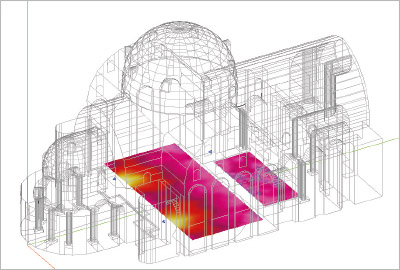
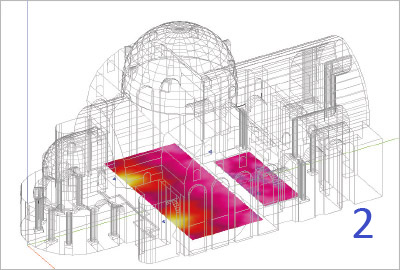
In the extreme northwest of Germany lies the Norderland at the North Sea with the city Norden, the oldest city in East Frisia. The 6.6 ha large Norder Marktplatz is one of the largest marketplaces in Germany. In the centre of the market place is the St. Ludgeri church, today the largest medieval church in East Frisia. The oldest part of the church is the low nave, which was built in the early 13th century as a Romanesque one-room church. In the early 14th century the freestanding bell tower was built to this church. Probably in 1318 the church was extended by a transept with three square cross vaults. The three-nave high choir, which towers above everything, was probably completed around 1455. The last comprehensive renovation was carried out in 1981-1985.
The founding of the church in Schüttorf was one of the earliest in the present-day Westphalian-niedresachen border region. A first church in Schüttorf is said to have been founded by St. Ludger as early as 800. On 17 December 2000, after a restoration phase lasting over five years, the Reformed Church in Schüttorf was returned to its original purpose during a festive service. The measures on the late Gothic hall church, which is important in terms of architectural and church history, and through which the interesting spatial impression of the 19th century was regained, were carried out in close cooperation with the state preservation authorities.
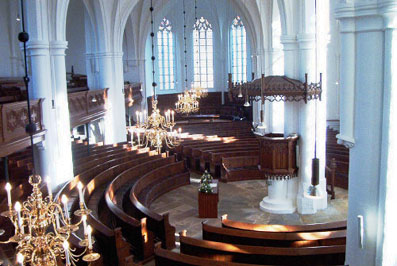
Conception of a digital video and audio transmission system for contemporary church services. DSP audio mixer with studio condenser microphones and specially designed array loudspeakers. Live transmission of the church service and recording via digital camera on 4 harmoniously integrated 46" flat screens.
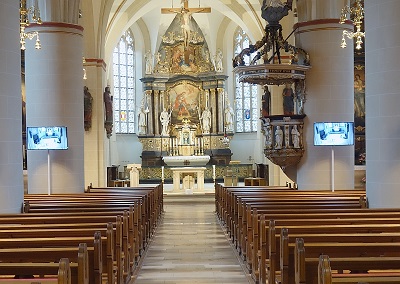
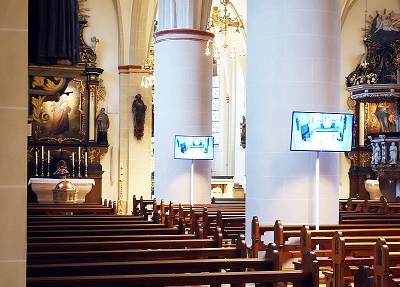
The Ebstorf monastery is documented in 1197. The hall church with nun's gallery is completely preserved in North German brick Gothic (14th century). To this day the Lutheran monastery is filled with spiritual life by a convent, which is presided over by an abbess.
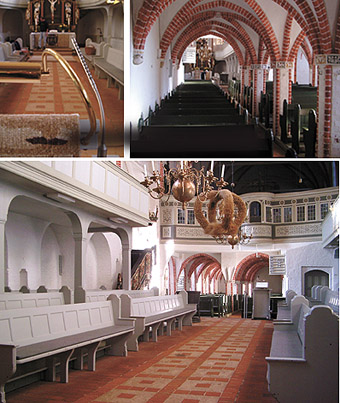
True to the Bible, confessing, reformatory... the three words should let you know that a lively life of faith pulsates in the rooms of the church. In St. Martini's Church, whose beginnings lie in the early 13th century, many denominations have determined the path of the congregation during its Protestant period. Today, it represents the unadulterated proclamation of the biblical word and resists the ideologization of sermons. Since 1974, church life has experienced an astonishing upswing, and the church services are very well attended today. Due to the prevailing acoustically particularly difficult conditions, it soon became clear that the task could not be accomplished with conventional equipment. After intensive comparisons, Seis Akustik was awarded the contract for an in-house developed amplifier technology and 20 custom-made loudspeaker systems. The result is a room sound system with clear sentence and syllable comprehensibility at every place in the church. Mr. Drefahl, one of the responsible churchwardens, expressed his enthusiasm and satisfaction about the achieved results as follows: "The fact that we were able to enjoy the advantages of the new system without restriction, especially during the festive services over the end of the year. It was simply noticeable to everyone how much we have improved with this facility".
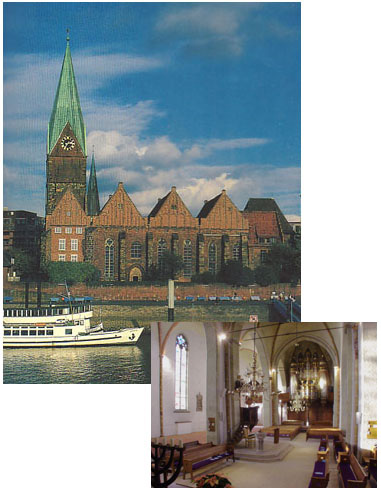
Around the middle of the 19th century, King George V and Queen Mary built St. George's Church on the old walls of a thirteenth century church. The master builder of this hall church was Conrad Wilhelm Hase. The long reverberation characteristic of a hall church can also be found here and, after a major renovation in 2018/19, could be effectively attenuated by the installation of CXM loudspeakers. Speech intelligibility has been considerably improved and hearing aid wearers can now listen more easily through their hearing aids by installing an induction system in accordance with DIN regulations.
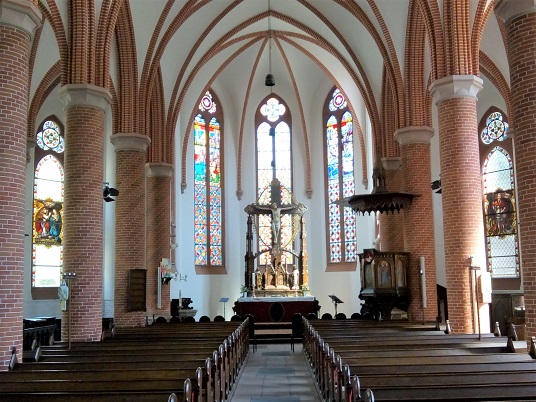
In the thirteenth century in the then centre of Brunswick, probably on the initiative of Henry the Lion, it was one of the parish churches of the city. Between 1250 and 1400 it was converted into a Gothic hall church. The acoustic system we found was outdated in many parts and no longer corresponded to the current state of the art and transmission quality. The sound of the main nave is now supplied by two BSF24 digital loudspeakers, which, thanks to the selectively tiltable sound fields and the integrated DSP control, enable all church visitors to enjoy optimal speech intelligibility. In the high choir, two analogue BS1632 loudspeakers ensure a balanced sound for the events taking place there. The sound system is not only characterised by the finest sound, but also by simple and reliable operation.
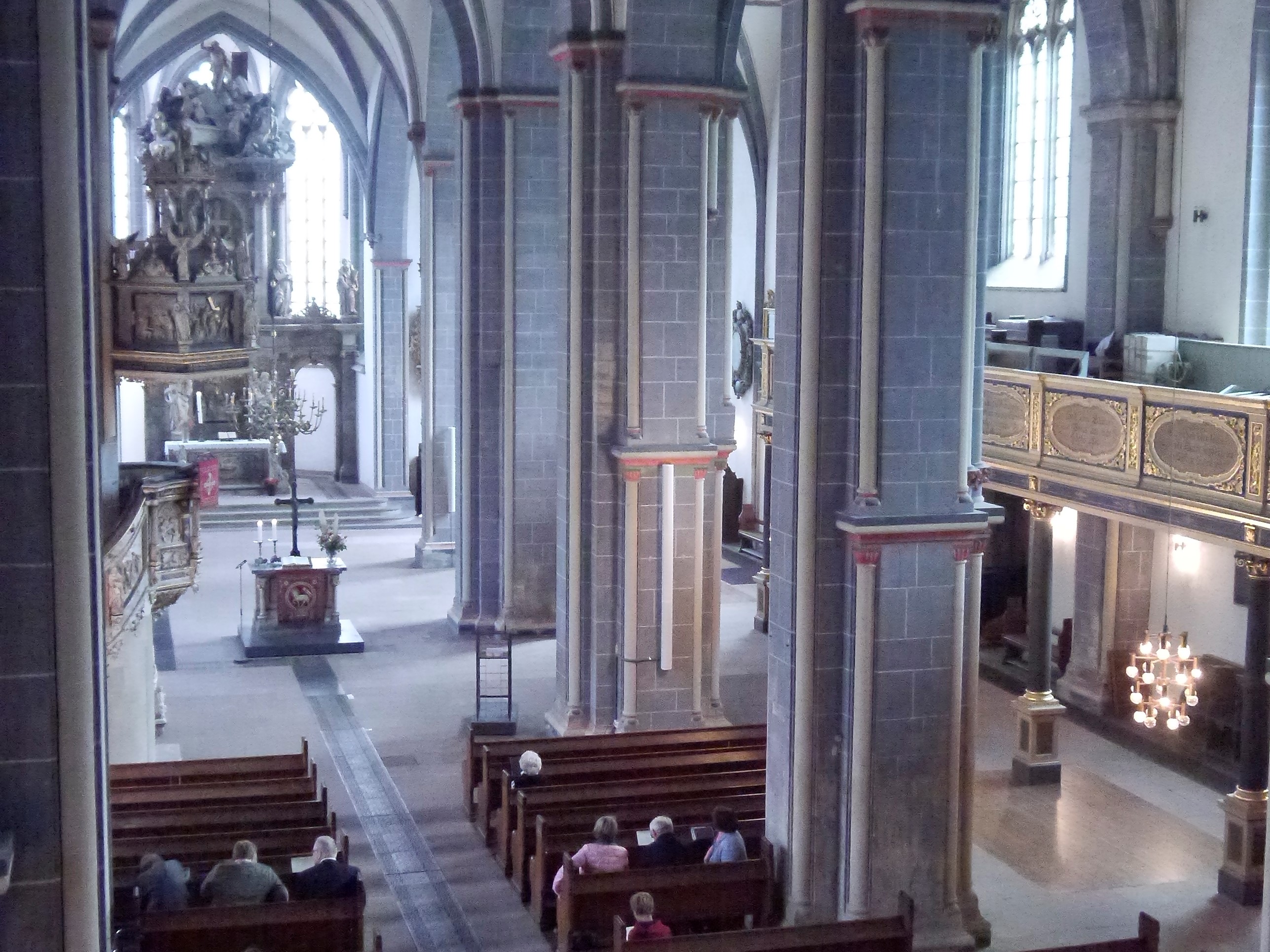
Probably built in the 12th century, the Liebfrauenkirche is architecturally very interesting, as a Romanesque nave in the style of a basilica is connected to a chancel of a Gothic hall church. With a length of approximately 55 metres, this church has a very strong reverberation, specially in the altar and choir area, which until now, also in the rest of the main nave, reduces the speech intelligibility extremely. The installation of CXM loudspeakers in the main nave, CX speech loudspeakers in the chancel and a digital control via an SDA matrix amplifier has considerably reduced the reverberation in the room acoustics. Speech intelligibility is now optimally guaranteed at all seats. In addition, the loudspeakers also transmit music recordings dynamically and transparently.
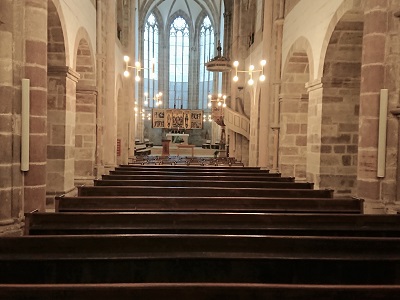
The market church in Goslar, a three-nave Romanesque pillar basilica, was first mentioned in documents in 1151. After intensive comparison, the community decided on a transmission system of seis-akustik. The decisive factor was ultimately the outstanding sound quality with excellent speech intelligibility despite the very difficult acoustic conditions. Another decisive factor was the extremely appealing design of our loudspeakers as the "visible" components of the transmission system. The elegant and at the same time inconspicuous design allows a problem-free and pleasing integration into almost every ambience.
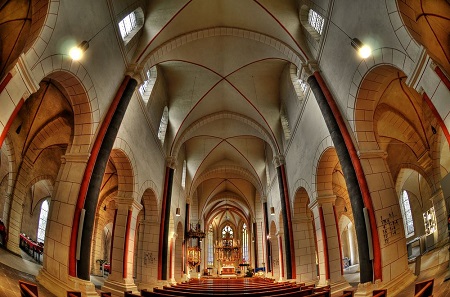
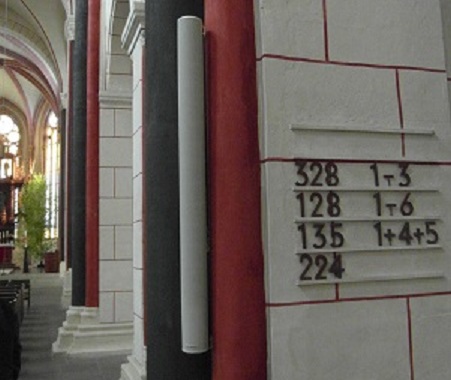
By order of Duke Julius, the construction of the main church Beatae Mariae Virginis was started in 1608. The main church in Wolfenbüttel has always been recognized by the scientific community as a highly individual and unique building. But it was not until 1926 that Georg Dehio formulated the main church in his "History of German Art" as the first and actually only artistically large-scale church building of Protestantism. Rainer Krause, Technical Director/Media Technology, now supplied the tailor-made concept for the renewal of the outdated sound technology. The new microphone system, controlled by the newly developed 12/6 matrix digital mixer SDM10, masters the difficult acoustic conditions with sovereignty and, in addition to good speech intelligibility, provides the prerequisite for high-quality music, instrumental and vocal transmissions. Churchgoers with hearing aids are optimally supplied by a modern induction system with constant current amplifier (according to DIN EN 60 118-4).
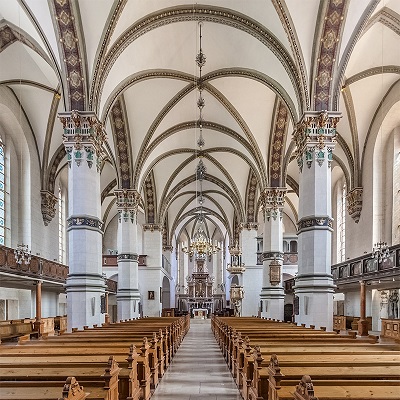
Excavations in the years 1873 - 77 and 1956 brought to light the remains of the foundations of the church consecrated in 1031. It is quite possible that this stone building from 1031 had a wooden predecessor (possibly 9th century). Only a fraction of the once very varied medieval furnishings and decorations of the Magnikirche have been preserved to this day. No other inner-city church in Braunschweig was so badly affected by the air raids during the 2nd World War as the Magnikirche.
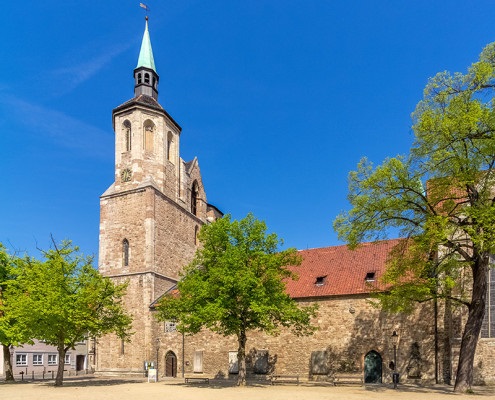
Visible from afar, the enormous, three-nave, Gothic St. Andrew's Church with the highest church tower in Niedersachsen dominates Hildesheim's townscape. Its location, today's Andreasplatz, was the centre of economic life in the period from the 11th to the middle of the 13th century. It was at this prominent square that the long-distance hiking trail from Flanders via Aachen to Königsberg, today's Bundesstrasse 1, ran in the north, while at the same time the north-south trade route from Bremen to Mainz crossed this place. Around 1140 a three-nave basilica was built, which could be reconstructed in its original location in 1949/50 based on the results of excavations. At the end of the 13th century, the citizens planned the construction of a new large church. This church was to bear witness to the self-confidence and pride of the citizens and the importance of the town through its size and decoration. In the years 1956 - 1965 the St. Andrew's Church, which was destroyed in March 1945, was rebuilt in 11 construction phases in the old Gothic form on the outside and inside, but without the lost baroque furnishings and the painted flat ceiling.
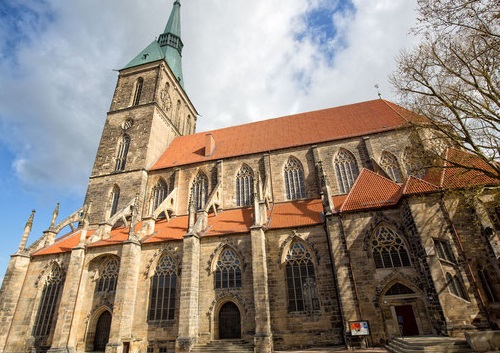
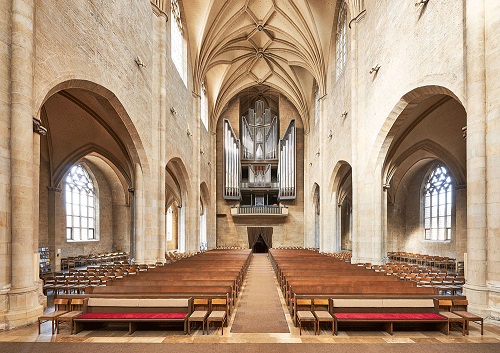
The Seis Akustik - Technik installed includes an automatic transmission system with design condenser microphones and sound forming loudspeaker systems, which were specially developed for use in acoustically demanding church rooms. Up-to-date hearing aid technology according to DIN EN 60 118-4 completes the high-quality equipment.
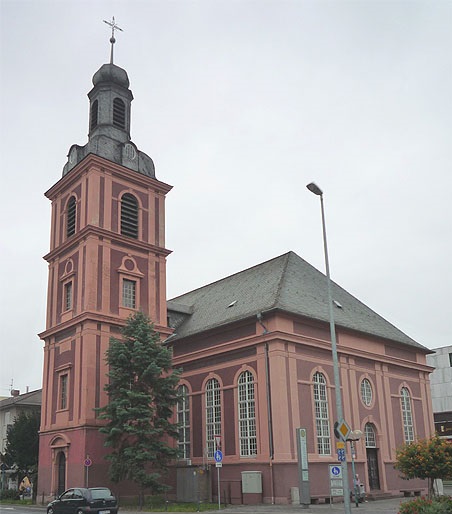
The basis of the installed Seis Akustik - Audiotechnik is a digital transmission system with automatic "Room-Control-System". For the hearing impaired, modern hearing technology according to the current state of the art (DIN EN 60 118-4) is available.
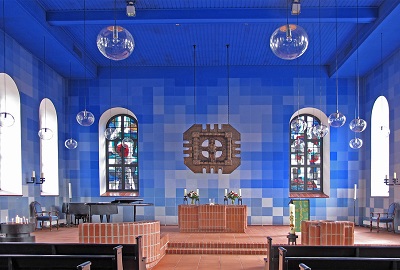
Basilica with three naves and transept, choir and projecting façade tower in early Gothic and transitional styles, designed by Ludwig Becker in 1901, after destruction in 1943/44 the church was rebuilt in its old form, except for the tower and ridge turret.

The oldest historical record of a church in Weiler dates back to 1135, when the brothers Regenbolt and Wezelo handed over a church built on their 'Wilre' estate to the Cologne monastery of St Kunibert. According to the plans of Eduard Endler the church was built until In 1925 the present church a little further south. In the course of the church renovation in 2006, Seis Akustik was awarded the contract to renew the complete audio technology and the song display system.
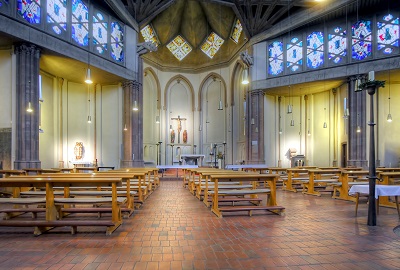
The oldest historical record of a church in Weiler dates back to 1135, when the brothers Regenbolt and Wezelo handed over a church built on their estate "Wilre" to the Cologne monastery of St. Kunibert. According to plans by Eduard Endler, the present church was built a little further south until 1925. In the course of the church renovation in 2006, Seis Akustik was awarded the contract to renew the complete audio technology and the song display system.

On Hohler Weg, the four towering towers of St. Aloysius Church, which was consecrated in 1894, rise impressively. The three-nave neo-Romanesque columned basilica has room for almost 2000 church visitors and is one of the largest parish churches in the diocese of Paderborn with a length of 60m and 23,000 sqm of enclosed space. For the renewal of the sound system, which had become absolutely necessary, it was important for the responsible persons to engage a company that was able to deliver a solution especially tailored to the extremely difficult room acoustics. After all, where does an off-the-peg loudspeaker system work? The SDM12 digital system developed by Seis Akustik, with 6 delay times (sound propagation delay correction), was the clear winner of the extensive testing of various systems. The integrated "Room Control System" automatically controls the system functions. For best speech intelligibility 6 of the new XL164 - sound forming loudspeakers provide. The MK7 condenser microphones were chosen for the microphone equipment, which convince with an impressively clear sound image and high feedback resistance. Reinhard Felgenhauer, head of the church: "Many thanks to the Seis Akustik team. We were convinced by the holistic system approach and the easy handling of the digital technology".
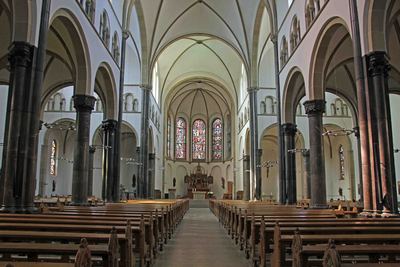
Seis Akustik was commissioned to renew the loudspeaker system and the song display system. The digital automatic matrix SDM10 controls the complete microphone and loudspeaker technology. The ultra-flat, radio-controlled song display system VISIO now replaces the old, unacceptable display technology.
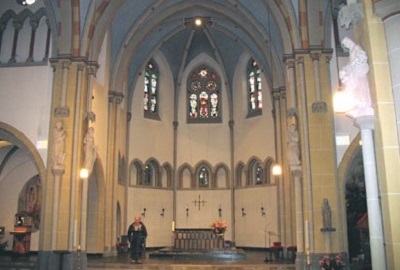
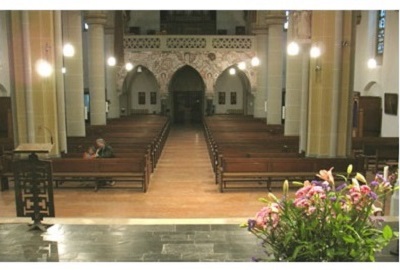
The heart of Seis Akustik - Audiotechnik is a digital audio system with an automatic "room control system". In addition, high-quality designer condenser microphones and sound forming loudspeaker systems, which were especially developed for use in acoustically demanding church rooms, are installed. For the hearing impaired, modern hearing aid technology in accordance with the current state of the art (DIN EN 60 118-4) is available.
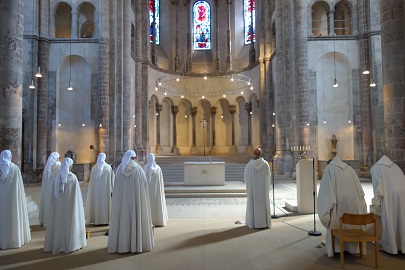
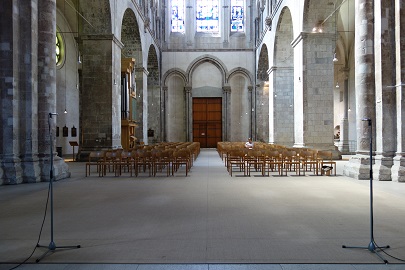
Seis Akustik created a new audio concept for the church. A digital audio system SDA290pro is now the heart of the system. In addition, 8 coaxial line array speakers, high quality condenser microphones and professional UHF radio microphones ensure good speech intelligibility for all church visitors. The DSP amplifier SDA290pro corrects the sound propagation time (delay) in the church room and optimizes the sound radiation of the loudspeaker systems.
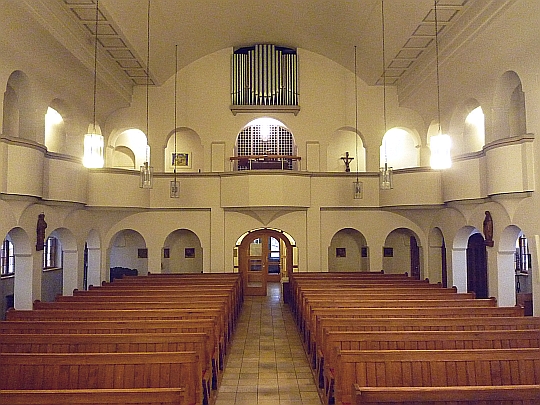
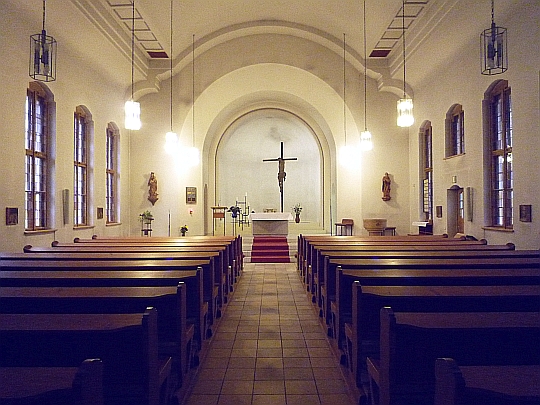
As early as 1981, the attempt to give space and a hearing to the protest movement against the stationing of medium-range missiles, which had just emerged in East and West, was successful in the Nikolai Church with devotions in the chancel of the church. Ultimately this was the birth of the Open City Church. The Prayers for Peace, which were later held regularly every Monday, were of great importance for the preparation and implementation of the peaceful revolution in autumn 1989, with the core date of 9 October. And, what still amazes the visitors most today, where the separating cord to the chancel is expected, we find the sign: "We invite you to the chancel".
As part of the comprehensive renovation of the Nikolaikirche, Frank Simon, head of the Seis Akustik branch in Berlin, provided the tailor-made concept for the renewal of the electro-acoustic transmission system in consultation with the community representatives and Pastor C. Führer. Two remote-controlled SDM8-2 digital automatic mixers with the latest DSP technology, developed by Seis Akustik, now form the centre of the new system. In close cooperation with the head of the ecclesiastical building authority and the monument protection authority, the loudspeaker technology was also revised.
High-quality condenser microphones from the Seis Acoustics "Design Series" were used for the renewal of the microphones. Our special microphones from the newly developed "Design Series" blend particularly well into the existing ambience with their high-quality surfaces such as stainless steel and brass.
Pastor C. Führer was very satisfied with the new transmission technology:
"The simple operation of our digital amplifier system quickly proved to be a great advantage for us. In practical use, the quality of the installed sound technology became immediately clear thanks to the true-to-life, easily understandable speech reproduction achieved".
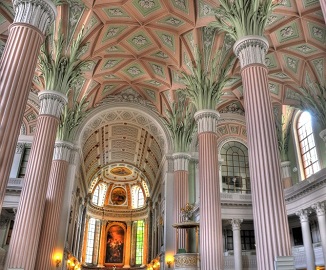
The Seis Akustik - Technik installed includes an automatic transmission system with design condenser microphones and sound forming loudspeaker systems, which were specially developed for use in acoustically demanding church rooms. Up-to-date hearing aid technology according to DIN EN 60 118-4 completes the high-quality equipment.
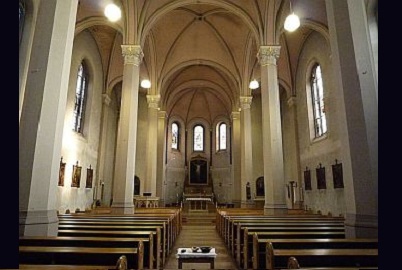
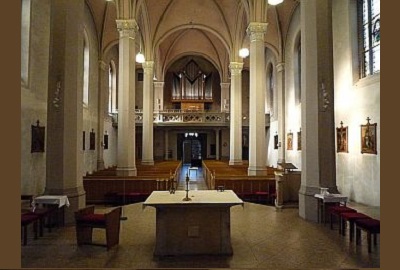
The early Romanesque Merseburg Cathedral and the Merseburg Castle stand on a plateau on the left bank of the Saale. The town gained supra-regional importance in the 10th/11th century, after Heinrich I, who was the first German king to rule from 919-936, had taken it over by marriage. The diocese foundation was then only established in 968. But already in 981 the diocese of Merseburg was abolished again. After the refoundation by King Heinrich II in 1004, Bishop Thietmar of Merseburg himself laid the foundation stones for a new cathedral building on May 18, 1015. The disposition of the early Romanesque cathedral has remained decisive to this day despite several alterations, although the nave was transformed into a late Gothic hall under Bishop Thilo of Trotha (1466-1514). While the early Romanesque spatial conditions can only be imagined with difficulty after profound alterations, they can still be experienced directly in the early Romanesque crypt.
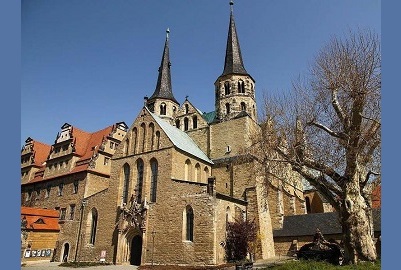
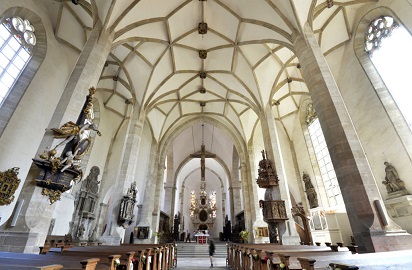
The Barlach town Güstrow impresses with its old town of half-timbered and brick Gothic. Apart from imposing town houses, magnificent Renaissance buildings and the classicistic town hall, its cathedral, consecrated in 1335, which still has Romanesque features, is particularly worthy of mention. Worldwide famous is the figure "Der Schwebende" ("The Floating One") by Ernst Barlach, a memorial for the victims of World War I, which is located in the north nave of the cathedral. The insufficient speech intelligibility for church visitors was now the reason for the responsible persons to deal in detail with the renewal of the transmission technology. The specifications for the new system technology in the cathedral were provided by an acoustic room expertise carried out by a team from Siusi's Acoustics Department on behalf of the cathedral parish. The subsequent simulation carried out with the "EASE" program provided the specifications for the loudspeaker types to be used. Project manager Frank Simon from Seis Akustik convinced the cathedral parish with a test run of a digital audio system developed and manufactured in-house. As the price-performance ratio was also convincing, the decision for the new system was made quickly. The newly developed SDA290pro DSP matrix amplifier, high-quality K9 condenser microphones and line array speakers from the CX series were used. Listeners with hearing aids can participate in the service "barrier-free" via an inductive hearing system.
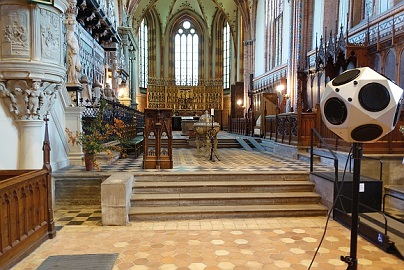

The cathedral of Halle is the oldest existing church building in Halle an der Saale. The sacred building, located on the edge of the old town, was originally founded by the Dominicans. Since 1688 the Reformed congregation has found a home in the cathedral. The Great Elector Friedrich Wilhelm von Brandenburg gave the church to the congregation "for eternal use". When the persecuted Huguenots came to Halle, the German and French Reformed formed a considerable minority in the city with its own grammar school and retirement homes, with services in German and French. Today there are about 250 parishioners spread throughout the city and the surrounding area. The distances are long, but many take it upon themselves to come to church. Seis Akustik provided the audio concept for the renewal of the loudspeaker system in the cathedral. An SDA290pro digital amplifier system, special CX series loudspeakers and modern UHF radio microphone technology now ensure good speech intelligibility in the demanding church interior and are the solution to the long-standing acoustic problems of the parish.
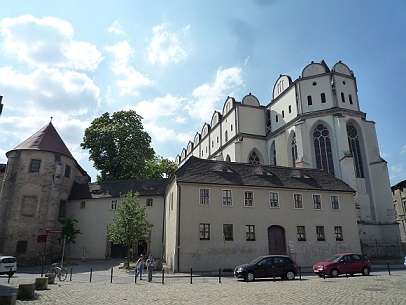
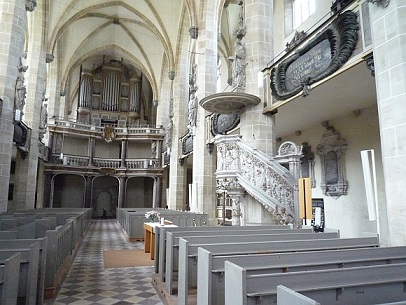
The heart of Seis Akustik - Audiotechnik is a digital audio system with an automatic "room control system". In addition, high-quality designer condenser microphones and sound forming loudspeaker systems, which were especially developed for use in acoustically demanding church rooms, are installed. For the hearing impaired, modern hearing aid technology in accordance with the current state of the art (DIN EN 60 118-4) is available.
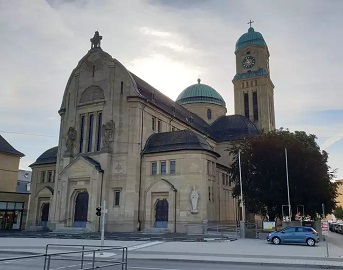
The Seis Akustik technology installed includes an automatic transmission system and modern hearing aid technology according to DIN EN 60 118.

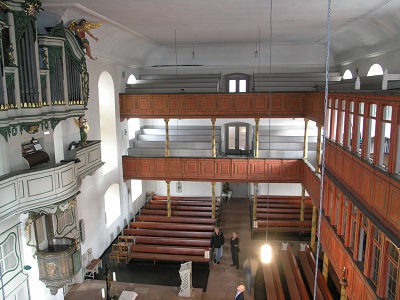
The Seis Akustik - Technik installed includes an automatic transmission system with design condenser microphones and sound forming loudspeaker systems, which were specially developed for use in acoustically demanding church rooms. Up-to-date hearing aid technology according to DIN EN 60 118-4 completes the high-quality equipment.
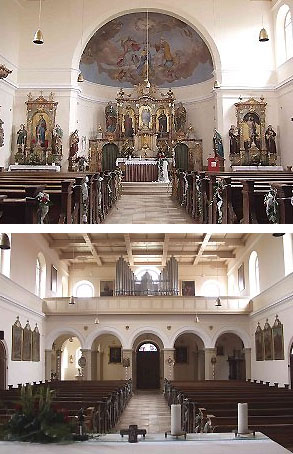
The Seis Akustik - Technik installed includes an automatic transmission system with design condenser microphones and sound forming loudspeaker systems, which were specially developed for use in acoustically demanding church rooms. Up-to-date hearing aid technology according to DIN EN 60 118-4 completes the high-quality equipment.
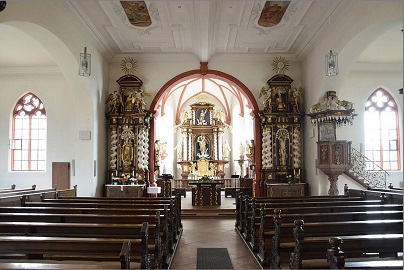
The Seis Akustik technology installed includes an automatic transmission system, modern hearing aid technology according to DIN EN 60 118-4 and the 8mm! flat, radio-controlled Visio song display system.
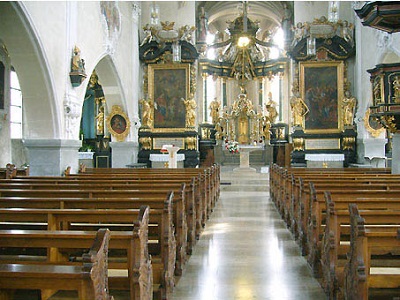
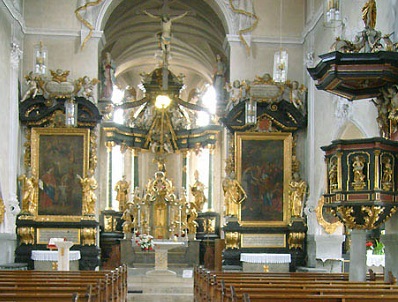
Situated on a ridge of a hill, the imposing complex of the Benedictine abbey dominates the valley of the western Günz. The main accent of this unique complex, which cleverly combines a monastery with a residence, is set by the magnificent basilica. In one of the most beautiful baroque churches in southern Germany, digital amplifier technology with 4-fold delayed outputs, developed by Siusi, was installed. The freely programmable memory locations proved to be a particular advantage for the customer. Different events such as church tours or Sunday services require different amplifier settings in order to achieve optimal transmission results in all cases.
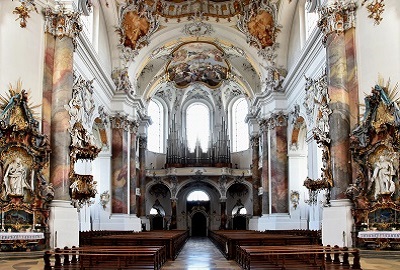
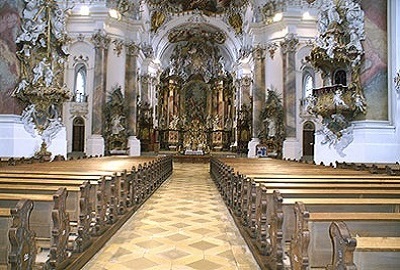
Seis Akustik has now mastered a special technical challenge with the renewal of the complete transmission technology in St. Kilian's Cathedral. Due to the difficult acoustic conditions in the cathedral, it was important for the responsible persons to install modern digital technology, which can be updated at any time through software updates. Thus, the system control still corresponds to the state of the art even after years. The demand of the Episcopal building authority for a trial operation of a transmission system in the cathedral was quickly met. The following test operation, which lasted several weeks and used newly developed digital technology from Seis Akustik, quickly demonstrated the superiority of the new audio system and convinced all those involved.